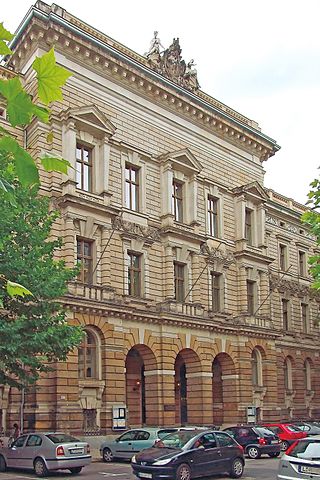
The University of Music and Theatre "Felix Mendelssohn Bartholdy" Leipzig (German: Hochschule für Musik und Theater "Felix Mendelssohn Bartholdy" Leipzig) is a public university in Leipzig (Saxony, Germany). Founded in 1843 by Felix Mendelssohn as the Conservatorium der Musik (Conservatory of Music), it is the oldest university school of music in Germany.
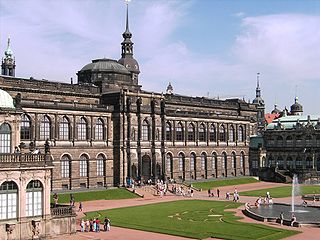
The Gemäldegalerie Alte Meister in Dresden, Germany, displays around 750 paintings from the 15th to the 18th centuries. It includes major Italian Renaissance works as well as Dutch and Flemish paintings. Outstanding works by German, French, and Spanish painters of the period are also among the gallery's attractions.

The Thomanerchor is a boys' choir in Leipzig, Germany. The choir was founded in 1212. The choir comprises about 90 boys from 9 to 18 years of age. The members, called Thomaner, reside in a boarding school, the Thomasalumnat and attend the St. Thomas School, Leipzig, a Gymnasium school with a linguistic profile and a focus on musical education. The younger members attend the primary school Grundschule Forum Thomanum or Anna-Magdalena-Bach-Schule. Johann Sebastian Bach served as Thomaskantor, director of the choir and church music in Leipzig, from 1723 to 1750.

Schilling & Graebner was an architecture firm based in Dresden, Germany, founded by the architects Rudolf Schilling (1859–1933) and Julius Graebner (1858–1917) in 1889. The firm was under their direction from 1889 until Graebner's death, but continued to exist until 1947, most notably under Graebner's son Erwin (1895–1945). The firm, which initially devoted itself primarily to historicism and later to Art Nouveau and early modernism, worked on mainly buildings in Saxony, including several noteworthy churches, Dresden villas, administrative buildings and entire residential districts. One of the firms' most important works is the Christuskirche in Dresden (1903–1905), which arguably marks the transition of sacral architecture in Germany from historicism to modernity.

Collmberg, regionally and colloquially called Collm, is the highest elevation in the Nordsachsen district and of the Northwest Saxon Basin, situated 6 km west of Oschatz near the small village of Collm. Until the 19th Century it was also called Spielberg and has also been known as Oschatzer Collm.
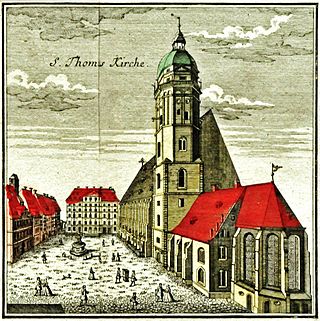
Thomaskantor is the common name for the musical director of the Thomanerchor, now an internationally known boys' choir founded in Leipzig in 1212. The official historic title of the Thomaskantor in Latin, Cantor et Director Musices, describes the two functions of cantor and director. As the cantor, he prepared the choir for service in four Lutheran churches, Thomaskirche, Nikolaikirche, Neue Kirche and Peterskirche. As director, he organized music for city functions such as town council elections and homages. Functions related to the university took place at the Paulinerkirche. Johann Sebastian Bach was the most famous Thomaskantor, from 1723 to 1750.

St. Matthew was a church in the old town of Leipzig. During its history it had several names and functions. As a church of the Franciscan order, built in 1488, it was known as Barfüßerkirche and Heiliggeistkirche. It served as a Lutheran church, known as Neukirche, from 1699. A new congregation formed in 1876 and named the church Matthäikirche. The building was destroyed in a bombing in 1943.
Ernst Heinrich Kneschke was a German heraldist, ophthalmologist and writer.

Gymnasium St. Augustine in Grimma (Gymnasium St. Augustin zu Grimma, historically known as Landes- und Fürstenschule Grimma is the only regular gymnasium offering boarding in Saxony. It is heavily steeped in tradition as one of the foremost schools in the country. Founded in 1550 as one of the three Fürstenschulen in Saxony, it has prepared young people for university studies since then.
Arnold Bartetzky is a German art historian and freelance journalist.
From 1959 to 1989, the city of Leipzig awarded the Kunstpreis der Stadt Leipzig, which was given for outstanding merits in the artistic field to persons who promoted the reputation of the city beyond the region: architects, visual artists, composers, musicians, singers, actors and writers as well as literary and art critics.
Rudolf Kötzschke was a German historian who founded the Seminar for Regional History and Settlement Studies in Leipzig, the first regional history institution at a German university.
Volker Rohde was a German conductor and academic teacher. After being principal conductor of the Orchester des Opernhauses Halle from 1976 to 1979, he subsequently served as deputy principal conductor at the Semper Oper Dresden and as musical director at the Oper Leipzig.

The Alte Handelsbörse or Alte Börse in Leipzig, Saxony, Germany, is the city's oldest assembly building of merchants, and also the oldest Baroque building. Built as the Börse in 1678, it is now used as an event venue and is known in English as the Old Stock Exchange.

Alte Messe Leipzig is the circa 50 hectares site in the southeastern part of Leipzig's district Mitte, where from 1920 until 1991 the technical exhibitions of the Leipzig Trade Fair took place, as well as the buildings that stand on it – but not the trade fair itself, which found a new home at a new site in the northern part of Leipzig. Since 1996 there has been no trade fair activity on the old site.
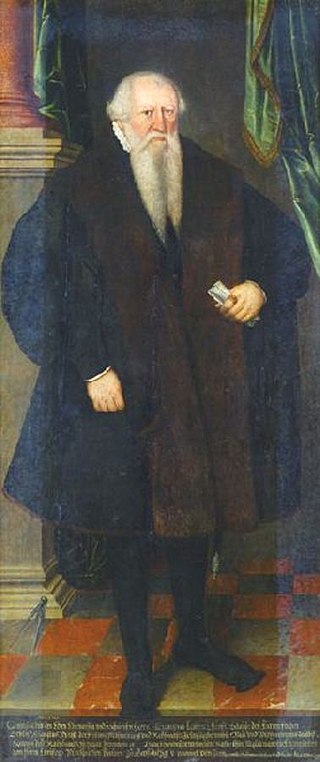
Hieronymus Lotter was a merchant and several times mayor of Leipzig, construction manager for important sovereign building projects in Saxony and the driving force behind extensive building measures by the municipal council in Leipzig. Lotter was the Master builder of Maurice, Elector of Saxony, under the direction of the principal toolmaster and master builder Caspar Vogt von Wierandt. According to earlier research, he was considered an important architect of the Renaissance; today its role is seen in a more differentiated way and above all its organizational function is emphasized.
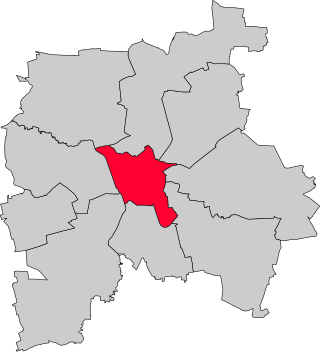
Leipzig-Mitte is one of ten boroughs (Stadtbezirke) of Leipzig, located in the center of the city. It includes numerous architectural monuments. Most of them are located in the subdivision "Zentrum", which is sited inside the Inner City Ring Road and the Promenadenring:

The Johannapark is an 11 hectares park near the city center in Leipzig. In the southwest it merges seamlessly into the Clara Zetkin Park and together with it and the Palmengarten forms a large park landscape that continues in the north and south in the Leipzig Auenwald.

Petersstrasse is a street in Leipzig's district of Mitte. It was repeatedly the busiest shopping street in Leipzig.




















